Medicine & Science in Sports & Exercise
- Subscribe to journal Subscribe
- Get new issue alerts Get alerts

Secondary Logo
Journal logo, current issue.

July 2024 - Volume 56 - Issue 7
- Editor-in-Chief: Andrew M. Jones. PhD
- ISSN: 0195-9131
- Online ISSN: 1530-0315
- Frequency: 12 issues / year
- Ranking: 9/87 in Sports Sciences Total Cites = 46,557 Eigenfactor Score = 0.02229 Cited Half-Life = 8.5 Google Scholar h5-index = 70
- Impact Factor: 4.1
News & Views from the Editor-in-Chief: Andrew M. Jones
.jpg)
Resistance exercise promotes temporal changes in gene transcription that, when repeated, result in health and performance improvements. Extracellular vesicles (EV) are key mediators of cell-cell communication capable of eliciting physiological change through transfer of their molecular cargo, including microRNA. Prior research has focused on EV cargo changes in response to aerobic exercise. In “Acute Resistance Exercise Modifies Extracellular Vesicle miRNAs Targeting Anabolic Gene Pathways: A Prospective Cohort Study," Conkright and colleagues examined the effects of acute resistance exercise on EV microRNA, revealing 34 microRNAs were altered post-exercise, targeting 4,895 messenger RNAs. These microRNAs were associated with pathways targeting growth and metabolism, immune function, and inflammation signaling. The authors conclude that acute resistance exercise alters EV microRNAs in a manner supportive of these processes. Circulating EVs may serve as significant adaptive signaling molecules influenced by exercise training.
In “Longitudinal Associations between 24-H Movement Behaviors and Cardiometabolic Biomarkers: A Natural Experiment over Retirement," Suorsa and colleagues examined how real time reallocations between device-based sleep, sedentary behavior (SED), light physical activity (LPA), and moderate-to-vigorous physical activity (MVPA) associate with changes in cardiometabolic biomarkers over the transition from work to retirement. Reallocating time from sleep and SED to LPA and MVPA was associated with an increase in HDL-cholesterol and decrease in total:HDL-cholesterol ratio. Reallocating time to MVPA from any other behavior was also associated with a decrease in triglycerides. Findings related to LDL-cholesterol, C-reactive protein, fasting glucose, and insulin were less conclusive. These findings suggest that increasing physical activity at the cost of passive behaviors over retirement transition associate with a better lipid profile.
The exercise intensity domain framework allows for accurate determination of the metabolic stimulus of exercise. Exercise intensity prescription relying on percent of maximal values “misses the mark", leading to a heterogenous metabolic stimulus across individuals. Consequently, without isolating metabolic responses within each domain, most studies evaluating the effect of exercise intensity on endurance training adaptations cannot provide conclusive evidence. In “Heavy-, Severe-, and Extreme-, but not Moderate-Intensity Exercise Increase V̇O2max and Thresholds after 6 Weeks of Training," Inglis and colleagues applied the full intensity domain framework (i.e., from moderate to extreme) to investigate domain-specific effects of aerobic exercise training on V̇O 2 max and thresholds in young untrained individuals. They report that: i) moderate-intensity did not produce significant increases; and ii) severe- interval and upper heavy-intensity continuous training were the most effective, with lower heavy-intensity and sprint interval training also showing benefits. Thus, precise intensity prescription that accounts for the true metabolic stimulus is key to predict changes in outcomes, providing evidence to advocate for a paradigm shift in exercise intensity prescription methods and guidelines.
Andrew M. Jones
University of Exeter
Colleague's E-mail is Invalid
Your message has been successfully sent to your colleague.
Save my selection
Featured Articles

Acute Resistance Exercise Modifies Extracellular Vesicle miRNAs Targeting Anabolic Gene Pathways: A Prospective Cohort Study
Medicine & Science in Sports & Exercise. 56(7):1225-1232, July 2024.
- Abstract Abstract
- Permissions
Go to Full Text of this Article

Longitudinal Associations between 24-h Movement Behaviors and Cardiometabolic Biomarkers: A Natural Experiment over Retirement
Medicine & Science in Sports & Exercise. 56(7):1297-1306, July 2024.

Heavy-, Severe-, and Extreme-, but Not Moderate-Intensity Exercise Increase V̇o 2max and Thresholds after 6 wk of Training
Medicine & Science in Sports & Exercise. 56(7):1307-1316, July 2024.
- 2max</sub> and Thresholds after 6 wk of Training', '02032024', 'ERIN CALAINE INGLIS, DANILO IANNETTA, LETIZIA RASICA, et al', '56', '7', 'Copyright \u00A9 2024 by the American College of Sports Medicine', '00005768-202407000-00011', '', true, '')" href="javascript:"> Permissions
Sports Medicine - Open
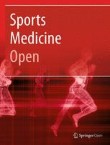
- Most accessed
Expertise and Deceptive Movements in Sport
Authors: Ryan Raffan, David Mann and Geert Savelsbergh
The Effect of Endurance Exercise on Semen Quality in Male Athletes: A Systematic Review
Authors: Alex Aerts, Annelien Temmerman, Arne Vanhie, Dirk Vanderschueren and Leen Antonio
Rating of Perceived Exertion: A Large Cross-Sectional Study Defining Intensity Levels for Individual Physical Activity Recommendations
Authors: Maximilian Grummt, Lorena Hafermann, Lars Claussen, Carolin Herrmann and Bernd Wolfarth
Balance Control is Sequentially Correlated with Proprioception, Joint Range of Motion, Strength, Pain, and Plantar Tactile Sensation Among Older Adults with Knee Osteoarthritis
Authors: Peixin Shen, Simin Li, Li Li, Daniel T. P. Fong, Dewei Mao and Qipeng Song
Concussion and the Sleeping Brain
Authors: Catherine C. Donahue and Jacob E. Resch
Most recent articles RSS
View all articles
The Training and Development of Elite Sprint Performance: an Integration of Scientific and Best Practice Literature
Authors: Thomas Haugen, Stephen Seiler, Øyvind Sandbakk and Espen Tønnessen
Mental Health In Elite Athletes: Increased Awareness Requires An Early Intervention Framework to Respond to Athlete Needs
Authors: Rosemary Purcell, Kate Gwyther and Simon M. Rice
Running economy: measurement, norms, and determining factors
Authors: Kyle R Barnes and Andrew E Kilding
Falls and injuries to Polo players: risk perception, mitigation and risk factors
Authors: C M Inness and K L Morgan
The Training Characteristics of World-Class Distance Runners: An Integration of Scientific Literature and Results-Proven Practice
Authors: Thomas Haugen, Øyvind Sandbakk, Stephen Seiler and Espen Tønnessen
Most accessed articles RSS
Aims and scope
Sports Medicine - Open focuses on original research and definitive reviews in the field of sport and exercise medicine. The Journal includes medical and scientific research relating to:
- Sporting performance enhancement including nutrition, equipment and training
- Medical syndromes associated with sport and exercise
- Injury prevention and treatment
- Exercise for rehabilitation and health
- The application of physiological and biomechanical principles to specific sporting codes
Key Points Articles published in Sports Medicine - Open will include a Key Points table. Please provide approximately three short, stand-alone lines/statements summarizing the key findings/implications of the paper. These should be provided after the Abstract under the heading 'Key Points’.
Latest blog
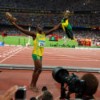
A better approach to talent identification?
30 November 2017
- Editorial Board
- Sign up for article alerts and news from this journal
Annual Journal Metrics
2022 Citation Impact 4.6 - 2-year Impact Factor 5.7 - 5-year Impact Factor 1.705 - SNIP (Source Normalized Impact per Paper) 1.15 - SJR (SCImago Journal Rank)
2023 Speed 15 days submission to first editorial decision for all manuscripts (Median) 216 days submission to accept (Median)
2023 Usage 1,609,820 downloads 4,288 Altmetric mentions
- More about our metrics
- ISSN: 2198-9761 (electronic)

Sports Medicine
Sports Medicine bridges the gap between science and practice in the promotion of exercise and health, and in the scientific assessment, study and understanding of sports performance. Regular features include: sports injury prevention and treatment; exercise for health; drugs in sport and recommendations for training and nutrition.
Designed as a superb reference source for physicians, sports medicine specialists, physiotherapists, exercise physiologists, team doctors and trainers alike, Sports Medicine focuses on definitive and comprehensive review articles that interpret and evaluate the current literature to provide the rationale for, and application of, research findings.
Sports Medicine also welcomes the submission of high-quality original research in the above fields.
As a hybrid journal, Sports Medicine does not charge authors to publish using the traditional subscription-based publishing route, but does offer the option to publish accepted articles open access if authors so wish or if their funders require ( more information ).
Sports Medicine offers a range of additional features designed to increase the visibility, readership and educational value of the journal’s content ( more information ).
- Steve McMillan,
- Roger Olney

Latest issue
Volume 54, Issue 5
Latest articles
N of 1: optimizing methodology for the detection of individual response variation in resistance training.
- Zac P. Robinson
- Eric R. Helms
- Michael C. Zourdos

Effects of Traditional Chinese Exercises on Glycemic Control in Patients with Type 2 Diabetes Mellitus: A Systematic Review and Meta-Analysis of Randomized Controlled Trials
- Chenyang Dong
- Shiyuan Sun

Some Threads Worth Caring About in a Corresponsive Sport Science
50 years of research on the psychology of sport injury: a consensus statement.
- Ulrika Tranaeus
- Adam Gledhill
- Andreas Ivarsson
Effects of Exercise on DNA Methylation: A Systematic Review of Randomized Controlled Trials
- Paula Etayo-Urtasun
- Mikel L. Sáez de Asteasu
- Mikel Izquierdo

Journal updates
Digital features.
Sports Medicine is able to host a range of digital features, with a number of options available to authors.

Journal information
- CAB Abstracts
- Google Scholar
- IFIS Publishing
- Japanese Science and Technology Agency (JST)
- Norwegian Register for Scientific Journals and Series
- OCLC WorldCat Discovery Service
- Science Citation Index Expanded (SCIE)
- Semantic Scholar
- TD Net Discovery Service
- UGC-CARE List (India)
Rights and permissions
Editorial policies
© Springer Nature Switzerland AG
- Find a journal
- Publish with us
- Track your research
- Leadership & Committees
- 2022-2027 Strategic Plan
- Patient Resources
- Sports Medicine Careers
- AOSSM Apparel Store
- Education & Events
- 2024 Annual Meeting
- Featured Programs & Events
- Speaker Resources
- eLearning Zone
- Claiming CME/MOC Credits
- Sports Medicine Fellowships
- Become a Member
- Member Benefits
- Early Career Engagement
- Traveling Fellowship
- Awards & Recognitions
- Sports Medicine Update
Research Agenda
- Grant Opportunities
- Past Grant Recipients
- Member Sponsored Surveys
- American Journal of Sports Medicine
- Sports Health: A Multidisciplinary Approach
- Video Journal of Sports Medicine
- Easy Reider Podcast
- Corporate Partners
- Partnership Opportunities
- Support AOSSM
- Member Login
Accelerating Excellence in Evidence-Based Research in Sports Medicine
Research is critical to the profession’s continued growth as it supports the development of knowledge, innovative methods, systems, and other appropriate interventions for advancing sports medicine.
Sports medicine professionals must remain current with new skills and emerging techniques. Research grants assist the profession in injury prevention and treatment and the growth of research talent.
Total Research Funding since 2003
| Annual Grants | $3,590,000 |
| Clinical Studies | $1,199,000 |
| One-time Grants | $1,050,000 |
| Research Think Tanks | $732,000 |
| Research Awards | $429,000 |
| $6,994,000 |
Our research mission is to enhance value in sports medicine through the development, promotion, and encouragement of cutting-edge research that improves patient care through grant opportunities focused on:
- Osteoarthritis (OA)
- Return to Sport/Play (RTP)
- Youth Sports Injuries/Early Sports Specialization (ESS)
- Sports Medicine Long-term Follow-up/Effects
- Hip Arthroscopy
- Tendinopathy
We are thankful for our donors’ support that keeps AOSSM at the forefront of advancing orthopaedic sports medicine through high-quality research. We will continue to invest in research that will enhance the profession on and off the field.
By clicking "Accept", you agree to the storing of cookies on your device and our use to enhance site navigation, analyze site usage, and assist in our communication efforts. Our cookie policy is available here .

Recent Posts
Safe return following testing positive.
by Kyle P. Harris | Dec 6, 2023
Elite-level athletes with a history of COVID-19 had cardiac measurements similar to unexposed elite athletes. Hence, return to sports participation is safe for athletes following COVID-19.
Eliminating Body Checking has Been Positive; However, Female Ice Hockey Players are Still at Risk!
by Jane McDevitt | Nov 29, 2023
Youth ice hockey policy eliminating body checking decreases the risk of concussion; however, concussion rates are still high among female ice hockey players.
The Biological Basis of Sex Differences in Athletic Performance: Consensus Statement for the American College of Sports Medicine
by Jeffrey B. Driban | Nov 6, 2023
Quick Links

- Board of Directors
- Committee Chairs
- Multi-Disciplinary Healthcare
- PRiSM Staff
- Welcome and Sponsor Highlight: Children’s Hospital of Orange County
- Scientific Sessions
- Instructional Courses
- Keynote Speakers
- Research Interest Group (RIG) Update
- Online Content Registration
- Registration
- Discounted Ticket & Accommodations
- Transportation
- Continuing Education
- Scientific Posters
- Complex Cases
- Lunch and Learns
- Sponsor Highlight
- Student/Trainee Travel Grant Awards
- Accommodations
- Pre-course: Performance Training from the Playground to the Olympic Stage: Specialization is Not the Problem
- Online Content
- Course Submissions
- Call for Abstracts
- Support and Exhibits
- Support Information
- Support Opportunities
- Exhibitor Information
- Explore Glendale
- CME/CEU Information
- 2019 Annual Meeting ePosters
- Pre-course for PT/ATC
- 2017 Annual Meeting
- 2016 Annual Meeting
- Learning Objectives
- Continuing Medical Education
- PRISM E-Posters
- PRiSM Quarterly
- Publications
- May 2020 - Volume 8, Issue 5
- April 2020 - Volume 8, Issue 4
- March 2020 - Volume 8, Issue 3
- Membership Renewal
- PRiSM Leadership Election
- HSS Pedi-FABS
- Physical Activity Questionnaire for Adolescents (PAQ - A)
- Physical Activity Questionnaire for Older Children (PAQ - C)
- OXFORD ANKLE FOOT QUESTIONNAIRE (OXAFQ)
- WESTERN ONTARIO AND MCMASTER UNIVERSITY KNEE OSTEOARTHRITIS INDEX (WOMAC)
- Pediatric International Knee Documentation Committee Scale (Pedi-IKDC)
- NOYES CINCINNATI KNEE RATING SCALE
- KNEE OUTCOME SURVEY (KOS) – ACTIVITIES OF DAILY LIVING (ADL)
- Knee Injury and Osteoarthritis Outcome Score for Children (KOOS - Child)
- ANTERIOR KNEE PAIN SCALE (AKPS) - KUJALA
- COLOR ANALOG SCALE (CAS)
- FACES PAIN SCALE - REVISED (FPS - R)
- NUMERICAL RATING SCALE - 11 (NRS - 11)
- PAIN CATASTROPHIZING SCALE – CHILD VERSION (PCS – C)
- EMOTIONAL DISTRESS
- GLOBAL HEALTH
- PAIN INTERFERENCE
- PEER RELATIONS
- PHYSICAL FUNCTION
- ADOLESCENT MEASURE OF CONFIDENCE AND MUSCULOSKELETAL PERFORMANCE (AMCAMP)
- ATHLETE BURNOUT QUESTIONNAIRE (ABQ)
- LIFE EVENT SCALE FOR COLLEGIATE ATHLETES (LESCA)LIFE EVENT SCALE FOR COLLEGIATE ATHLETES (LESCA)
- PATIENT HEALTH QUESTIONNAIRE - 2 (PHQ - 2)
- PATIENT HEALTH QUESTIONNAIRE - 9 (PHQ - 9)
- PERCEIVED MOTIVATIONAL CLIMATE IN SPORT QUESTIONNAIRE (PMCSQ)
- PERCEPTION OF SUCCESS QUESTIONNAIRE (POSQ)
- RECOVERY – STRESS QUESTIONNAIRE FOR ATHLETES (RESTQ – SPORT)
- CHILD HEALTH QUESTIONNAIRE CHILD FORM (CHQ-CF-87)
- CHILD HEALTH QUESTIONNAIRE PARENT FORM (CHQ-PF-28)
- CHILD HEALTH QUESTIONNAIRE PARENT FORM (CHQ-PF-50)
- EUROQOL – 5D - YOUTH (EQ – 5D - Y)
- GENERAL HEALTH QUESTIONNAIRE - 12 (GHQ – 12)
- GENERAL HEALTH QUESTIONNAIRE - 28 (GHQ – 28)
- GENERAL HEALTH QUESTIONNAIRE - 30 (GHQ – 30)
- PEDIATRIC QUALITY OF LIFE INVENTORY 4.0 GENERIC CORE SCALES (PEDSQL)
- PODCI/PEDIATRIC MUSCULOSKELETAL FUNCTIONAL HEALTH QUESTIONNAIRE
- MICHELI FUNCTIONAL SCALE (MFS)
- PEDIATRIC/ADOLESCENT SHOULDER SURVEY (PASS)
- PEDIATRIC AND ADOLESCENT SHOULDER AND ELBOW SURVEY (PEDI-ASES)
- SHORT DISABILITIES OF THE ARM, SHOULDER, AND HAND QUESTIONNAIRE (QUICKDASH)
- YOUTH THROWING SCORE (YTS)
- Volunteer/Donate
Connect with us
- Member Login
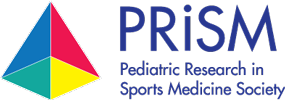
The purpose of PRiSM is to lead interdisciplinary research, education and advancement in pediatric and adolescent sports medicine.
Due to the Wisconsin/Milwaukee "Safer at Home" order, the PRiSM office will be closed as of Wednesday, March 25, 2020. The PRiSM staff will continue to work remotely. While email ([email protected]) is the best method of communication, staff will be checking voicemail frequently. We will continue to keep you updated on the status of the office closure and hope you stay well.
News Updates
- AJSM & PRiSM Webinar: OCD of the Knee- REGISTER NOW!
- AM25 Call for Abstracts!
- Order PRiSM Merch!
- 11th Annual Meeting Content Now Available!
- Webinar: Pediatric Baseball Athletes and the Elbow – A Paradigm Shift?
- Webinar: Pediatric and Adolescent Concussion Rehabilitation: Examination, Intervention, and Interdisciplinary Case Discussion
- Dues Renewals
View this profile on Instagram PRiSM Society (@ prismsportsmed ) • Instagram photos and videos
PRiSM's on Twitter
Be a part of a collective group of focused individuals that are united in the mission of PRiSM. As the PRiSM Society grows from our infancy phase, we invite you to take this journey with us and make this society a unique network of resources.
Need a change in your career? PRiSM brings you job opportunities in pediatric and adolescent sports medicine.
Annual Meeting
11th Annual Meeting Online Content Now Available!
PRiSM has identified key areas to focus on research grant funding. We currently have 16 active Research Interest Groups. PRiSM's goal as we grow is to be able to fund our own grants in these areas in order to develop and maintain evidence-based best practices.
Log in using your username and password
- Search More Search for this keyword Advanced search
- Latest content
- Current issue
- For authors
- New editors
- BMJ Journals
You are here
- Online First
- Methods for recording and reporting of epidemiological data on injury and illness in sport: ReFORM synthesis of the International Olympic Committee consensus statement
- Article Text
- Article info
- Citation Tools
- Rapid Responses
- Article metrics
- http://orcid.org/0000-0003-1969-3612 Pascal Edouard 1 , 2 ,
- http://orcid.org/0000-0002-7937-9863 Camille Tooth 3 , 4 , 5
- 1 Inter-university Laboratory of Human Movement Biology (EA 7424) , University Jean Monnet Saint-Etienne, Lyon 1, Université Savoie Mont-Blanc , Saint-Etienne , France
- 2 Department of Clinical and Exercise Physiology, Sports Medicine Unit , University Hospital of Saint-Etienne , Saint-Etienne , France
- 3 Department of Physical Medicine, Rehabilitation and Sports Traumatology, SportS², FIFA Medical Centre of Excellence, FIMS Collaborative Centre of Sports Medicine , CHU de Liège , Liège , Belgium
- 4 Department of Physical Activity and Rehabilitation Sciences , University of Liège , Liège , Belgium
- 5 ReFORM IOC Research Centre for Prevention of Injury and Protection of Athlete Health , Liège , Belgium
- Correspondence to Prof Pascal Edouard, University Hospital of Saint-Etienne, SAINT-ETIENNE, France; Pascal.Edouard{at}univ-st-etienne.fr
https://doi.org/10.1136/bjsports-2024-108516
Statistics from Altmetric.com
Request permissions.
If you wish to reuse any or all of this article please use the link below which will take you to the Copyright Clearance Center’s RightsLink service. You will be able to get a quick price and instant permission to reuse the content in many different ways.
- Sporting injuries
- Epidemiology
- Preventive Medicine
Introduction
Epidemiological studies through injury and illness surveillance and data collection are fundamental to protect athlete health. To encourage consistency in definitions and methodology, and to allow for data comparison between studies, consensus statements have been published in various sports. The aim of the International Olympic Committee (IOC) consensus by Bahr et al 1 on methods for collecting and reporting epidemiological data on injuries and illnesses in sport was (1) to further strengthen consistency in data collection, injury definitions and research reporting through an updated set of recommendations for studying injuries and illnesses in sports, and (2) to provide practical guidance to researchers and clinicians on how to plan, conduct data collection and communicate findings. The ReFORM IOC Research Centre 2 first summarised and translated the consensus statement into a shorter synopsis in French to facilitate broader use by French-speaking researchers. 3 4 In this Editorial, we provide this summary to highlight key areas from the IOC consensus on methods for collecting and reporting epidemiological data on injuries and illnesses in sport 1 (figure 1).
Infographic of the ReFORM synthesis of the International Olympic Committee consensus statement on methods for recording and reporting of epidemiological data on injury and illness in sport.
Definitions and classifications of health problems
X @https://x.com/PascalEdouard42, @https://x.com/ToothCamille
Contributors PE and CT wrote the synthesis. All authors understand that they are accountable for all aspects of the work and ensure the accuracy or integrity of this manuscript. PE is the guarantor of the manuscript.
Funding This work has been financially supported by the International Olympic Committee Medical and Scientific Commission programme for Prevention of injury and protection of athlete health (IOC Research Centres).
Competing interests None declared.
PE is an Associate Editor for the British Journal of Sports Medicine.
Provenance and peer review Not commissioned; internally peer reviewed.
Read the full text or download the PDF:
- Access Member Benefits
- Exercise is Medicine
ACSM’s Guidelines for Exercise Testing and Prescription, 11th edition

The eleventh edition offers several innovations. A NEW chapter focused on the role of exercise in conditions that impact the brain includes conditions previously covered, as well as conditions not previously included, such as Alzheimer’s, autism, depression and anxiety. The most recent guidelines and recommendations available from ACSM position stands and other relevant professional organizations’ scientific statements, including the 2018 Physical Activity Guidelines for Americans , has been integrated, making this text the most current, primary resource for exercise testing and prescription. Revised appendices include need-to-know information on metabolic equations, ECGs, medication and ACSM certifications . This manual is a must-have resource for all exercise professionals, as well as other health professionals who may counsel patients on exercise ( i.e. , physicians, nurses, physician’s assistants, physical and occupational therapists, dietitians, and health care administrators).

11th Edition Update | Brain-Related Conditions
Related resources:.
- Read a Q&A with the eleventh edition Senior Editor Dr. Gary Liguori here
- Review this at-a-glance Summary of Significant Revisions/Editions from the 10th to 11th edition
- A comprehensive crosswalk of revisions from the 10th to 11th editions is now available. This faculty resource provides specific, by-chapter changes.
- Faculty adopting the text for their courses can request supporting resources
- An easy-to-read infographic on the ACSM Exercise Preparticipation Health Screening Recommendations can be found here
- Learn how to apply the ACSM Exercise Preparticipation Health Screening algorithm in the video found here
Purchase From Our Publisher

Learn More About the ACSM Guidelines
- Evolution of the ACSM Guidelines: Historical Perspectives, New Insights, and Practical Implications (article)
- The origin story of ACSM’s Guidelines for Exercise Testing and Prescription (video)
- 2024 Election Results
- News Archive
- Certification Task Force
- Advertise with ACSM
- Current Partners
- National Youth Sports Health & Safety Institute
- Annual Report 2022
- Annual Report 2023
- Annual Report 2024
- Honor & Citation Awards
- Strategic Plan
- Student Membership
- Alliance Membership
- Professional-in-Training Membership
- Professional Membership
- Renew Membership
- Regional Chapters
- Member Code of Ethics
- ACSM Member Spotlight
- Group Exercise Instructor
- ACSM Personal Trainer Prep
- ACSM Exercise Physiologist Prep
- ACSM Clinical Exercise Physiologist Prep
- Beijing Institute of Sports Medicine
- Wellness Academy
- Frequently Asked Questions
- Recertification FAQs
- Find an ACSM Certified Professional
- Certified Professional of the Year
- Wellcoaches
- Certified Professional Discounts
- Hire ACSM Certified Professionals
- Specialty Certificate Programs
- ceOnline FAQs
- Approved Providers
- Current Sports Medicine Reports
- Exercise and Sport Sciences Reviews
- Exercise, Sport, and Movement
- Health & Fitness Journal
- Medicine & Science in Sports & Exercise
- Translational Journal
- Paper of the Year Awards
- ACSM's Guidelines for Exercise Testing and Prescription
- ACSM's Resources for the Personal Trainer
- ACSM's Resources for the Exercise Physiologist
- ACSM's Clinical Exercise Physiology
- ACSM's Resources for the Group Exercise Instructor
- ACSM's Certification Review
- ACSM's Foundations of Strength Training and Conditioning
- ACSM's Nutrition Exercise Science
- ACSM's Essentials of Youth Fitness
- ACSM's Introduction to Exercise Science
- ACSM's Health/Fitness Facility Standards and Guidelines
- ACSM’s Body Composition Assessment
- ACSM's Complete Guide to Fitness and Health
- Preparticipation Physical Evaluation (PPE) Monograph, 5th Edition
- ACSM's Fitness Assessment Manual
- ACSMs Exercise Testing and Prescription
- Textbook Adoption
- Translated Position Stands
- ACSM Official Statements
- Team Physician Consensus Statements
- Resource Library
- ACSM Fitness Trends
- Autism and Exercise
- Sudden Cardiac Arrest
- Mental Health
- Physical Activity Guidelines
- Reducing Sedentary Behavior
- Faculty Resources
- EIM Clinical Resources
- Black History Month
- ACSM's Brown Bag Series (archived)
- Sex Differences
- Emerging Physician Leaders Pilot Program
- Annual Meeting
- IDEA & ACSM Health & Fitness Summit
- Advanced Team Physician Course
- Sports Medicine Essentials
- Integrative Physiology of Exercise Conference
- International Team Physician Course
- Regional Chapter Meetings
- Meeting Exhibits and Sponsors
- Research & Program Grants
- Howard G. "Skip" Knuttgen Scholar Award
- Travel and Research Awards
- ACSM Research Grant Recipients
- Dedicated Endowments & Funds
- Planned Giving / Discovery Society
- Today's news
- Reviews and deals
- Climate change
- 2024 election
- Fall allergies
- Health news
Mental health
- Sexual health
- Family health
- So mini ways
- Unapologetically
- Buying guides
Entertainment
- How to Watch
- My watchlist
- Stock market
- Biden economy
- Personal finance
- Stocks: most active
- Stocks: gainers
- Stocks: losers
- Trending tickers
- World indices
- US Treasury bonds
- Top mutual funds
- Highest open interest
- Highest implied volatility
- Currency converter
- Basic materials
- Communication services
- Consumer cyclical
- Consumer defensive
- Financial services
- Industrials
- Real estate
- Mutual funds
- Credit cards
- Balance transfer cards
- Cash back cards
- Rewards cards
- Travel cards
- Online checking
- High-yield savings
- Money market
- Home equity loan
- Personal loans
- Student loans
- Options pit
- Fantasy football
- Pro Pick 'Em
- College Pick 'Em
- Fantasy baseball
- Fantasy hockey
- Fantasy basketball
- Download the app
- Daily fantasy
- Scores and schedules
- GameChannel
- World Baseball Classic
- Premier League
- CONCACAF League
- Champions League
- Motorsports
- Horse racing
- Newsletters
New on Yahoo
- Privacy Dashboard
Older women are being significantly shortchanged by medical research
Medical research has shortchanged women for decades. This is particularly true of older women, leaving physicians without critically important information about how to best manage their health.
Late last year, the Biden administration promised to address this problem with a new effort called the White House Initiative on Women’s Health Research. That inspires a compelling question: What priorities should be on the initiative’s list when it comes to older women?
Subscribe to The Post Most newsletter for the most important and interesting stories from The Washington Post.
Stephanie Faubion, director of the Mayo Clinic’s Center for Women’s Health, launched into a critique when I asked about the current state of research on older women’s health. “It’s completely inadequate,” she told me.
One example: Many drugs widely prescribed to older adults, including statins for high cholesterol, were studied mostly in men, with results extrapolated to women.
“It’s assumed that women’s biology doesn’t matter and that women who are premenopausal and those who are postmenopausal respond similarly,” Faubion said.
“This has got to stop: The FDA has to require that clinical trial data be reported by sex and age for us to tell if drugs work the same, better or not as well in women,” she added.
Consider the Alzheimer’s drug Leqembi, approved by the Food and Drug Administration last year after the manufacturer reported a 27 percent slower rate of cognitive decline in people who took the medication. A supplementary appendix to a Leqembi study published in the New England Journal of Medicine revealed that sex differences were substantial - a 12 percent slowdown for women, compared with a 43 percent slowdown for men - raising questions about the drug’s effectiveness for women.
This is especially important because nearly two-thirds of older adults with Alzheimer’s disease are women. Older women are also more likely than older men to have multiple medical conditions, disabilities, autoimmune illnesses, depression and anxiety, uncontrolled high blood pressure and osteoarthritis, among other issues, according to scores of research studies.
Even so, women are resilient and outlive men by more than five years in the United States. As people move into their 70s and 80s, women outnumber men by significant margins. If we’re concerned about the health of the older population, we need to be concerned about the health of older women.
As for research priorities, here’s some of what physicians and medical researchers suggested:
Heart disease
Why is it that women with heart disease, which becomes far more common after menopause and kills more women than any other condition - are given less recommended care than men?
“We’re notably less aggressive in treating women,” said Martha Gulati, director of preventive cardiology and associate director of the Barbra Streisand Women’s Heart Center at Cedars-Sinai in Los Angeles. “We delay evaluations for chest pain. We don’t give blood thinners at the same rate. We don’t do procedures like aortic valve replacements as often. We’re not adequately addressing hypertension.
“We need to figure out why these biases in care exist and how to remove them.”
Gulati also noted that older women are less likely than their male peers to have obstructive coronary artery disease - blockages in large blood vessels - and more likely to have damage to smaller blood vessels that remains undetected. When they get procedures such as cardiac catheterizations, women have more bleeding and complications.
What are the best treatments for older women given these issues? “We have very limited data. This needs to be a focus,” Gulati said.
Brain health
How can women reduce their risk of cognitive decline and dementia as they age?
“This is an area where we really need to have clear messages for women and effective interventions that are feasible and accessible,” said JoAnn Manson, chief of the Division of Preventive Medicine at Brigham and Women’s Hospital in Boston and a key researcher for the Women’s Health Initiative, the largest study of women’s health in the United States.
Numerous factors affect women’s brain health, including stress - dealing with sexism, caregiving responsibilities and financial strain - which can fuel inflammation. Women experience the loss of estrogen, a hormone important to brain health, with menopause. They also have a higher incidence of conditions with serious impacts on the brain, such as multiple sclerosis and stroke.
“Alzheimer’s disease doesn’t just start at the age of 75 or 80,” said Gillian Einstein, the Wilfred and Joyce Posluns chair in women’s brain health and aging at the University of Toronto. “Let’s take a life course approach and try to understand how what happens earlier in women’s lives predisposes them to Alzheimer’s.”
What accounts for older women’s greater vulnerability to anxiety and depression?
Studies suggest a variety of factors, including hormonal changes and the cumulative impact of stress. In the journal Nature Aging, Paula Rochon, a professor of geriatrics at the University of Toronto, also faults “gendered ageism,” an unfortunate combination of ageism and sexism that renders older women “largely invisible.”
Helen Lavretsky, a professor of psychiatry at the University of California at Los Angeles and past president of the American Association for Geriatric Psychiatry, suggests several topics that need further investigation. How does the menopausal transition impact mood and stress-related disorders? What nonpharmaceutical interventions can promote psychological resilience in older women and help them recover from stress and trauma? (Think yoga, meditation, music therapy, tai chi, sleep therapy and other possibilities.) What combination of interventions is likely to be most effective?
How can cancer screening recommendations and cancer treatments for older women be improved?
Supriya Gupta Mohile, director of the Geriatric Oncology Research Group at the Wilmot Cancer Institute at the University of Rochester, wants better guidance about breast cancer screening for older women, broken down by health status. Currently, women 75 and older are lumped together even though some are remarkably healthy and others notably frail.
Recently, the U. S. Preventive Services Task Force noted that “the current evidence is insufficient to assess the balance of benefits and harms of screening mammography in women 75 years or older,” leaving physicians without clear guidance. “Right now, I think we’re underscreening fit older women and overscreening frail older women,” Mohile said.
She also wants more research about effective and safe treatments for lung cancer in older women, many of whom have multiple medical conditions and functional impairments.
“For this population, it’s decisions about who can tolerate treatment based on health status and whether there are sex differences in tolerability for older men and women that need investigation,” Mohile said.
Bone health, functional health and frailty
How can older women maintain mobility and preserve their ability to take care of themselves?
Osteoporosis, which causes bones to weaken and become brittle, is more common in older women than in older men, increasing the risk of dangerous fractures and falls. Once again, the loss of estrogen with menopause is implicated.
“This is hugely important to older women’s quality of life and longevity, but it’s an overlooked area that is understudied,” said Manson of Brigham and Women’s.
Jane Cauley, a distinguished professor at the University of Pittsburgh School of Public Health who studies bone health, would like to see more data about osteoporosis among older Black, Asian and Hispanic women, who are undertreated for the condition. She would also like to see better drugs with fewer side effects.
Marcia Stefanick, a professor of medicine at Stanford University School of Medicine, wants to know which strategies are most likely to motivate older women to be physically active. And she’d like more studies investigating how older women can best preserve muscle mass, strength and the ability to care for themselves.
“Frailty is one of the biggest problems for older women, and learning what can be done to prevent that is essential,” she said.
KFF Health News is a national newsroom that produces in-depth journalism about health issues and is one of the core operating programs at KFF.
Related Content
Here’s what the Christian right wants from a second Trump term
An official website of the United States government
The .gov means it’s official. Federal government websites often end in .gov or .mil. Before sharing sensitive information, make sure you’re on a federal government site.
The site is secure. The https:// ensures that you are connecting to the official website and that any information you provide is encrypted and transmitted securely.
- Publications
- Account settings
Preview improvements coming to the PMC website in October 2024. Learn More or Try it out now .
- Advanced Search
- Journal List
- v.8(3); 2022 Mar

Sports Medicine and Movement Sciences
Giuseppe musumeci.
a Department of Biomedical and Biotechnological Sciences, Human Anatomy and Histology Section, School of Medicine, University of Catania, Via S. Sofia 87, 95123, Catania, Italy
b Research Center on Motor Activities (CRAM), University of Catania, 95123, Catania, Italy
c Department of Biology, College of Science and Technology, Temple University, Philadelphia, PA, 19122, USA
Sports Medicine is a relatively new topic in medicine and includes a variety of medical and paramedical fields. Although sports medicine is mistakenly thought to be mainly for sports professionals/athletes, it actually encompasses the entire population, including the active and non-active healthy populations, as well as the sick [ 1 ]. Sports medicine also engages amateur sportsmen and strives to promote physical activity and quality of life in the general population. Hence, the field involves all ages from childhood to old age, aiming to preserve and support every person at every age. Sports medicine, which started developing in the 19 th century, is today a medical speciality.
Currently, there exist different technologies applied in the world of sports medicine dedicated to the detection of health problems. Evidence has demonstrated that virtual environments can be useful therapeutic tools with demonstrated positive outcomes. Modern technological advances have led to the implementation of digital devices, such as wearables and smartphones, which have been shown to provide opportunities for healthcare professionals and researchers to monitor physical activity and therefore engage patients in daily exercising. Additionally, the use of digital devices has emerged as a promising tool for improving frequent health data collection, disease monitoring, and supporting public health surveillance. The leveraging of digital data has laid the foundation for the development of a new concept of epidemiological study, known as “Digital Epidemiology”, which could contribute in the future to personalized and precision sports medicine.
The understanding of the importance of physical activity and fitness as part of a healthy lifestyle is increasing all over the world, as well as the number of amateur athletes and the profession of sports medicine takes a big part in this process.
Physical inactivity is the fourth leading cause of morbidity and mortality worldwide [ 2 ]. Regular physical activity is highly beneficial for the primary, secondary and tertiary management of many common chronic conditions. There is considerable evidence for the benefits of physical activity for cardiovascular disease, diabetes, obesity, musculoskeletal conditions, some cancers, mental health and dementia [ 3 ]. Yet there remains a large evidence-practice gap between physicians’ knowledge of the contribution of physical inactivity to chronic disease and routine effective assessment and prescription of physical activity.
The benefits of physical activity for the prevention and treatment of many chronic diseases are well established, including the infection of Sars-CoV-2. Considering the countless positive effects of exercise, planning an adapted physical activity in all phases of recovery (bed rest, rehabilitation, and post-hospitalization) of the patient represents an important strategy to mitigate the decline of cognitive functions and improve the physical and psychological wellbeing of subjects affected by COVID-19. Physical activity, if adapted to the needs of the individual, practiced consistently and regularly, shows a positive influence on the immune system due to its natural protective and anti-inflammatory action. Correct and constant physical exercise, even at home, at all ages and especially in the elderly, is an extra shield against Sars-CoV-2 [ 4 ]. Thanks to the Adapted Physical Activity patients improve the skills: psychological, mental, cardiorespiratory and muscular.
For some chronic conditions, structured exercise interventions are at least as effective as drug therapy. The adapted physical activity should be prescribed in the same way as pharmacological treatment, deciding on the “dosage” and “formulation” for each patient. The “dosage” is calculated to reach a specific level of efficacy that prevents or improves symptoms but does not result in toxic effects [ 3 ]. The exercise regime should always be "adapted" personalized and "tailored" since the level of exercise will depend on the tolerability of the individual, since the body of each of us always responds differently. No do-it-yourself or generalized training/protocols should be allowed, because physical activity if done poorly, can cause more damage than a sedentary lifestyle. As stated by the American College of Sports Medicine, physical activity should be prescribed/administered, alternatively or in association with drug treatment by the Sports and/or Family Physician and/or the Kinesiologist [ 5 ].
With sincere satisfaction and pride, I present to you the Special Issue titled “Sports Medicine and Movement Sciences” . This Special Issue bridging the gap between science and practice in the promotion of exercise and health and in the scientific assessment, study, and understanding of sports performance, sports injury prevention and treatment, exercise for health as non-surgical and non-pharmacological treatments, rehabilitation techniques, adapted physical activity, drugs in sport, and recommendations for training and nutrition.
This Special issue comprises 3 review articles and 16 original research publications from a number of Sports Medicine and Movement Sciences researchers [ 6 , 7 , 8 , 9 , 10 , 11 , 12 , 13 , 14 , 15 , 16 , 17 , 18 , 19 , 20 , 21 , 22 , 23 , 24 ]. Taken together, these articles are geared toward the advancement of our understanding Sports Medicine and Movement Sciences arena, including: Cognitive function; Brain health; Gait analysis; Biomechanics; Health sciences; Physiology; Physical activity; Occupational health; Musculoskeletal system; Evidence-based medicine; Aerobic threshold; Anaerobic threshold; Maximal oxygen uptake; Neuroscience; Exercise; Physical Activity; Balance; Metastability; Neuromuscular control; Prevention; Rehabilitation; Health Promotion; Anatomy; Health Technology; Three-dimensional motion analysis; Reliability; knee injury; Athletic pubalgia; Cardiology; Women's Health; Female athletes; Applied psychology; Clinical psychology; Paralympic sport; Goalball; Soccer; Cognitive psychology; Quality of life; Disability; Regenerative medicine; Osteoarthritis; Virtual reality; Sensorimotor control; Sports injury prevention; Epidemiology; Public health; Psychology; COVID-19; Pandemic; Quarantine; Home based exercise; IPAQ-SF; Psychological well-being; PGWBI; Nerve injury; Nerve regeneration; Therapeutic exercise; Wearable technologies; Sprint initiation; Step technique; Multi-directional movement; Novel training environments and digital devices; Adherence; Breast cancer; Lifestyle; Public Health and Digital Epidemiology.
I hope that readers of Heliyon enjoy reading these significant contributions that remind us of the crucial importance of interdisciplinary collaboration between those working in Sports Medicine and their counterparts in Movement Sciences.
Conflict of interest declaration
The author of this editorial does not have any conflict of interests.
Acknowledgements
The author of this editorial wishes to thank all authors who have contributed to this Special Issue and express his gratitude to Heliyon Clinical Research editorial Team for their assistance and co-operation, in particular Dr. Christian Schulz the Lead Editor of Heliyon and Dr. Lo, On Ching the Editorial Team Leader of Heliyon Clinical Research. Special thanks to the publishing group (Cell Press) who encouraged and made possible the realization of this special issue.
- Skip to main content
- Skip to FDA Search
- Skip to in this section menu
- Skip to footer links

The .gov means it’s official. Federal government websites often end in .gov or .mil. Before sharing sensitive information, make sure you're on a federal government site.
The site is secure. The https:// ensures that you are connecting to the official website and that any information you provide is encrypted and transmitted securely.
U.S. Food and Drug Administration
- Search
- Menu
- News & Events
- FDA Newsroom
- Press Announcements
FDA Warns Consumers to Avoid Certain Male Enhancement and Weight Loss Products Sold Through Amazon, eBay and Other Retailers Due to Hidden, Potentially Dangerous Drug Ingredients
FDA News Release
Agency Urges Online Marketplaces, Other Websites and Retailers to Stop Selling These Male Enhancement and Weight Loss Products to American Consumers
The FDA continues to find potentially dangerous products available for purchase. On Dec. 8, 2021, the FDA warned consumers not to purchase or use nine potentially dangerous sexual enhancement products available for purchase from Walmart.com. The FDA will continue to alert the public when products and companies place consumers’ health at risk.
On July 26, 2021, the FDA issued an untitled letter to notify Amazon about its distribution of sexual enhancement and weight loss products in violation of the Federal Food, Drug, and Cosmetic Act. The FDA continues to find potentially dangerous products available for purchase and urges stores, websites, and online marketplaces, including Amazon, to stop selling these potentially dangerous products.
The U.S. Food and Drug Administration is warning consumers not to use nearly 50 male enhancement or weight loss products that have been found to contain hidden ingredients and may pose a significant health risk. The FDA purchased these products on Amazon and eBay and agency testing found that the products contain active pharmaceutical ingredients not listed on their labels, including some with ingredients found in prescription drugs. These products may cause potentially serious side effects and may interact with medications or dietary supplements a consumer is taking.
Despite FDA consumer warnings about similar products over the past decade, the agency continues to find potentially dangerous products available for purchase on the internet, including from online marketplaces like Amazon and eBay, as well as in retail stores. The agency urges consumers to beware of purchasing or taking these products.
“Protecting the health and safety of Americans is the FDA’s highest priority, and we will remain vigilant and communicate about products and companies that place U.S. consumers at risk,” said Donald D. Ashley, J.D., director of the Office of Compliance in the FDA’s Center for Drug Evaluation and Research. “While the FDA has engaged in discussions with online marketplaces like Amazon and eBay regarding these issues in the past, we believe they can do more to protect consumers from these fraudulent and potentially dangerous products. We continue to urge stores, websites and online marketplaces, like Amazon and eBay, to take appropriate steps to protect the American public by not selling or facilitating the sale of illegal FDA-regulated products.”
All 26 of the products the FDA purchased on Amazon and 20 of 25 products, or 80 percent, purchased on eBay contained undeclared active pharmaceutical ingredients. The FDA’s laboratory testing found the products contained various undeclared active ingredients, including sildenafil, tadalafil, vardenafil, sibutramine, desmethylsibutramine, phenolphthalein and/or fluoxetine. Many of these are active ingredients for use in FDA-approved prescription drugs, which are restricted to use under the supervision of a licensed health care professional.
Many of the products the agency purchased from Amazon and eBay have names that are the same as, or similar to, tainted products that have been the subject of previous FDA consumer warnings . Several of the Amazon products are designated as an “Amazon Choice” or “#1 Best Seller.” Products with undeclared drug ingredients violate federal law. In general, these products are unapproved new drugs and/or adulterated dietary supplements. In addition, they are misbranded because their labels do not accurately reflect their ingredients.
The FDA’s tainted products database can help consumers identify nearly 1,000 of these potentially dangerous products. However, the agency is unable to test and identify all products that have potentially harmful hidden ingredients. Even if a product is not included in the list, consumers should be cautious about using certain products, especially those promoted for sexual enhancement, weight loss, bodybuilding, sleep aids or pain relief. Consumers should also be on alert for products that offer immediate or quick results and that sound too good to be true. The FDA is committed to protecting consumers by identifying and removing these potentially dangerous products from the market.
Consumers using or considering using any over-the-counter product marketed for sexual enhancement, weight loss or bodybuilding, or any product marketed as a dietary supplement for pain relief, should talk to a health care professional first, as some ingredients may interact with medications or dietary supplements. Additionally, consumers should search for product information from sources other than sellers and ask a doctor for help distinguishing between reliable and questionable information.
The FDA encourages consumers and health care professionals to report any adverse events to the agency’s MedWatch Adverse Event Reporting program so the agency can take action to protect the public from any unsafe products. The FDA is also committed to protecting consumers from the risks of buying medicines online and helping them be more aware of how to buy online safely.
The FDA, an agency within the U.S. Department of Health and Human Services, protects the public health by assuring the safety, effectiveness, and security of human and veterinary drugs, vaccines and other biological products for human use, and medical devices. The agency also is responsible for the safety and security of our nation’s food supply, cosmetics, dietary supplements, products that give off electronic radiation, and for regulating tobacco products.
Related Information
- Tainted Sexual Enhancement Products
- Tainted Weight Loss Products
- Subscribe to the RSS feed
- Beware of Fraudulent Dietary Supplements
- Presentation: Tainted Products Marketed as Dietary Supplements
Sports Medicine Center at Husky Stadium
Make an appointment, clinic hours.
| Day of Week | Hours Open |
|---|---|
| Monday | 6:30 am - 5:00 pm |
| Tuesday | 6:30 am - 5:00 pm |
| Wednesday | 6:30 am - 5:00 pm |
| Thursday | 6:30 am - 5:00 pm |
| Friday | 6:30 am - 5:00 pm |
| Saturday | Closed |
| Sunday | Closed |
Returning Patients
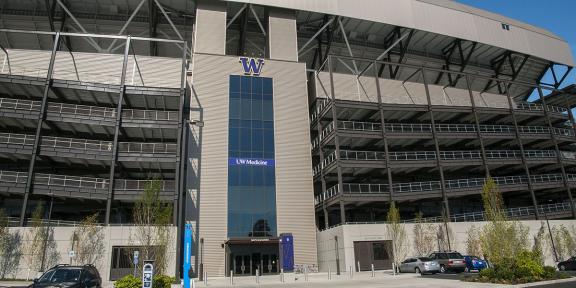
If at any point your symptoms worsen or you feel like you are experiencing a medical emergency, call 911 or proceed to the nearest emergency room.

Andre Abadin, DO
Medical specialties, appointments.

Lyndsey Booker, MD

Catherine M. Braden D.P.T.

Kenneth M. Chin M.D.

Em Clayton, PA-C
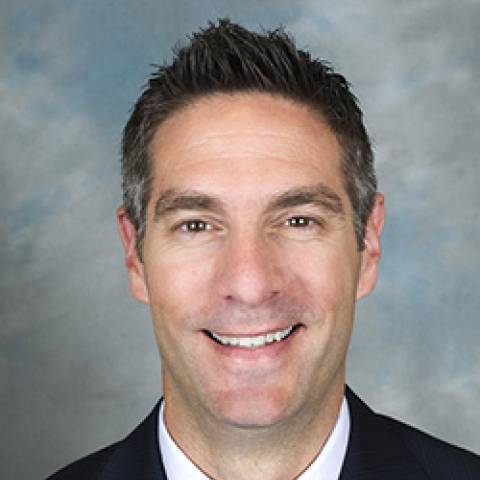
Jonathan A. Drezner M.D.

Albert O. Gee M.D.

Joshua M. Gellert P.T., D.P.T, S.C.S
Medical specialty.

Sarah Gustafson M.P.T.

Mia Hagen, MD

Mark A. Harrast M.D.

Stephen C. Johnson M.D.

Charles Kenyon, DO, MS, CSCS

Aaron K. Kingsland D.P.T., S.C.S.
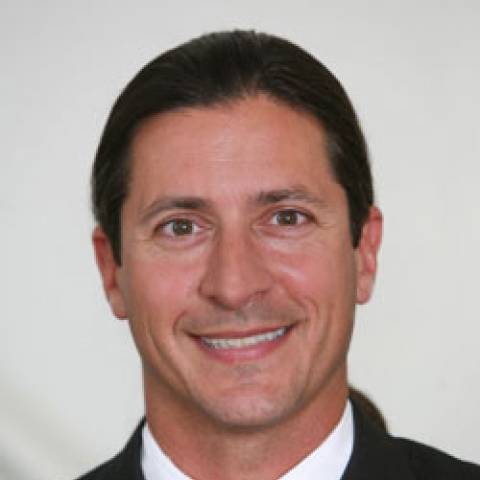
Brian J. Krabak, MD, MBA, FACSM

Andrea Kussman, MD, CAQSM

Christopher Y. Kweon M.D.
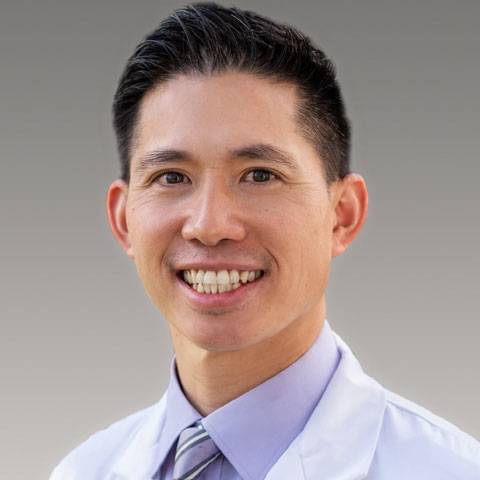
Brian C. Liem, MD, RMSK, FAAPMR

Cindy Lin, MD, FACSM, FAAPMR
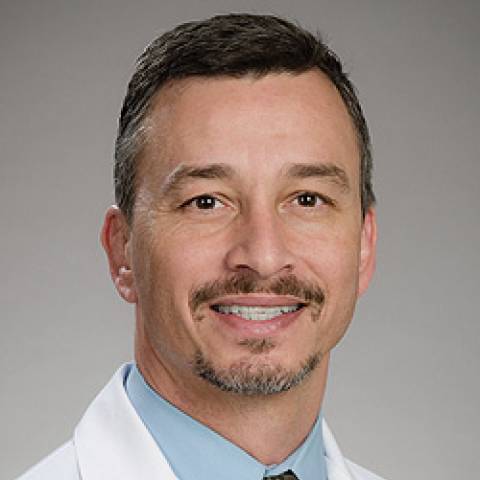
Jason E. Maris P.A.-C.
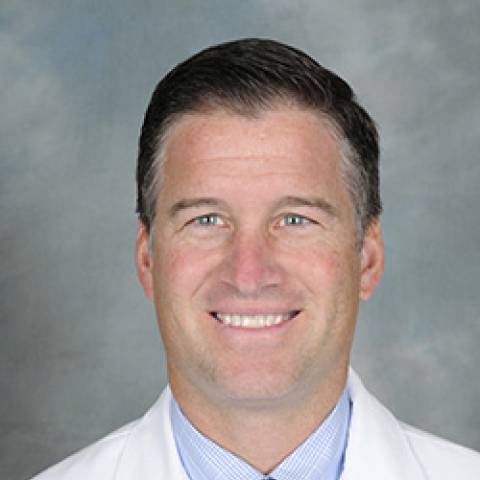
John W. O'Kane M.D.
Lauren paladino, do.

Ashwin L. Rao, MD, FAMSSM
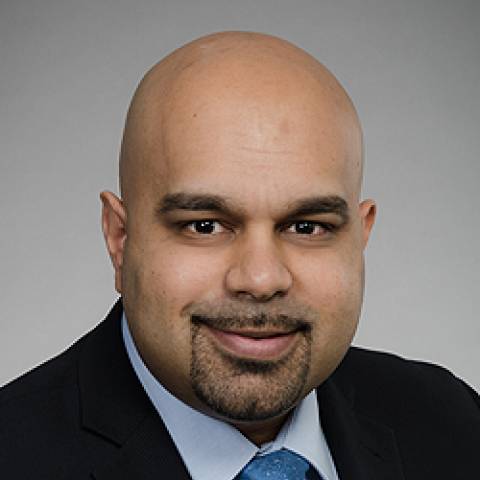
Neelwant S. Sandhu M.D.
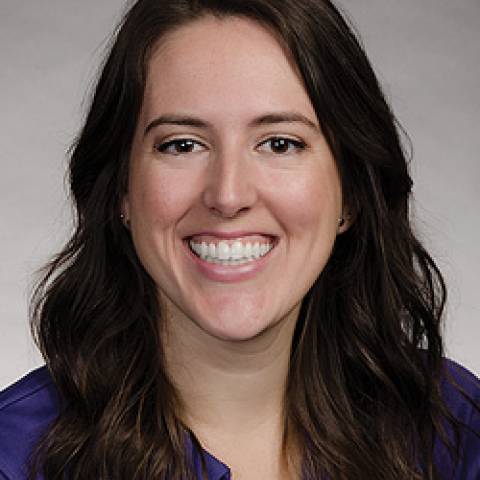
Katie L. Schimizzi P.T.A. , L.M.T., C.S.C.S.

Priya P. Shah, PA-C

David M. Siebert, MD
Services available at this location include:.
- Ankle surgery
- Anti-gravity treadmill
- Foot surgery
- Hand and wrist care
- Hip and knee care
- Hip surgery
- Interventional spine procedures
- Knee surgery
- Minimally invasive surgery
- Musculoskeletal medicine
- Musculoskeletal ultrasound
- Orthopedic surgery
- Osteoporosis
- Physical therapy
- Shoulder and elbow care
- Shoulder and elbow surgery
- Spine and back injury
- Sports cardiology
- Sports medicine
- Sports medicine surgery
Patient Resources
- Billing and insurance
- Preparing for your appointment
- Interpreter services
- Patient forms
Introducing MyChart Patient Portal
We’ve merged our patient portals to provide a secure and easy way to manage your health and billing records and schedule appointments all in one place...called MyChart.
Health News You Can Use
Sports medicine care at husky stadium for people of all ages and abilities.
The Sports Medicine Center at Husky Stadium is an ultramodern, 30,000 square-foot facility located on the UW campus.
Our providers work with people of all ages and abilities, including athletes and non-athletes alike. We have specialists in sports medicine, orthopedic surgery, physical therapy and radiology, offering a full range of sports medicine services.
Our staff includes team physicians for the UW Huskies, Seattle Seahawks, various Seattle public high schools and the Seattle Marathon. They’ll work with you —and others involved in your care—to assess and resolve your injuries and health concerns.
From Interstate 5 Northbound:
- Take exit #168B (Bellevue/Kirkland) to State Route 520.
- Take first exit off SR520 to Montlake Blvd NE.
- Turn left (north) onto Montlake Blvd NE.
- Cross the Montlake Bridge.
- Take the first right right onto NE Pacific St./ Walla Walla Road
- Clinic is located underneath the stadium. Enter through the glass double doors under the purple South sign.
From the State Route 520 Westbound:
- Take the Montlake Blvd NE exit.
- Turn right (north) onto Montlake Blvd NE.
Many bus lines of King County Metro Transit serve the Sports Medicine Clinic at 3800 Montlake Blvd. N.E. Use Metro's Trip Planner to learn which buses can get you to the clinic. We are also just steps away from the University of Washington Link light rail station!
Underground parking is available in E19 (parking lot right in front of the double glass door entry to the elevator lobby). The underground parking entrance is located on the south side of Husky Stadium, directly to the west of the main entry doors (to the left when facing the building). Drive down the parking ramp, turn right and follow signs to "Sports Medicine". There are reserved spots for patients, marked with signage near the glassed-in elevator lobby, and disabled parking spaces, too. Parking rates apply. There is an automated pay stall in the elevator lobby to pay only via Visa, MasterCard , or Discover before you leave; no cash is accepted at the pay stalls.
To get to the clinic, take one of the two elevators on your right down the first floor (Level 1).
An official website of the United States government
The .gov means it’s official. Federal government websites often end in .gov or .mil. Before sharing sensitive information, make sure you’re on a federal government site.
The site is secure. The https:// ensures that you are connecting to the official website and that any information you provide is encrypted and transmitted securely.
- Publications
- Account settings
- My Bibliography
- Collections
- Citation manager
Save citation to file
Email citation, add to collections.
- Create a new collection
- Add to an existing collection
Add to My Bibliography
Your saved search, create a file for external citation management software, your rss feed.
- Search in PubMed
- Search in NLM Catalog
- Add to Search
The Importance of Muscular Strength: Training Considerations
Affiliations.
- 1 Department of Human Movement Sciences, Carroll University, Waukesha, WI, 53186, USA. [email protected].
- 2 Centre for Exercise and Sports Science Research, Edith Cowan University, Joondalup, Australia.
- 3 Department of Exercise Science, LaGrange College, LaGrange, GA, 30240, USA.
- 4 Department of Exercise and Sport Sciences, Center of Excellence for Sport Science and Coach Education, East Tennessee State University, Johnson City, TN, 37614, USA.
- PMID: 29372481
- DOI: 10.1007/s40279-018-0862-z
This review covers underlying physiological characteristics and training considerations that may affect muscular strength including improving maximal force expression and time-limited force expression. Strength is underpinned by a combination of morphological and neural factors including muscle cross-sectional area and architecture, musculotendinous stiffness, motor unit recruitment, rate coding, motor unit synchronization, and neuromuscular inhibition. Although single- and multi-targeted block periodization models may produce the greatest strength-power benefits, concepts within each model must be considered within the limitations of the sport, athletes, and schedules. Bilateral training, eccentric training and accentuated eccentric loading, and variable resistance training may produce the greatest comprehensive strength adaptations. Bodyweight exercise, isolation exercises, plyometric exercise, unilateral exercise, and kettlebell training may be limited in their potential to improve maximal strength but are still relevant to strength development by challenging time-limited force expression and differentially challenging motor demands. Training to failure may not be necessary to improve maximum muscular strength and is likely not necessary for maximum gains in strength. Indeed, programming that combines heavy and light loads may improve strength and underpin other strength-power characteristics. Multiple sets appear to produce superior training benefits compared to single sets; however, an athlete's training status and the dose-response relationship must be considered. While 2- to 5-min interset rest intervals may produce the greatest strength-power benefits, rest interval length may vary based an athlete's training age, fiber type, and genetics. Weaker athletes should focus on developing strength before emphasizing power-type training. Stronger athletes may begin to emphasize power-type training while maintaining/improving their strength. Future research should investigate how best to implement accentuated eccentric loading and variable resistance training and examine how initial strength affects an athlete's ability to improve their performance following various training methods.
PubMed Disclaimer
Similar articles
- Change of Direction Speed: Toward a Strength Training Approach with Accentuated Eccentric Muscle Actions. Chaabene H, Prieske O, Negra Y, Granacher U. Chaabene H, et al. Sports Med. 2018 Aug;48(8):1773-1779. doi: 10.1007/s40279-018-0907-3. Sports Med. 2018. PMID: 29594958
- Short-term Periodization Models: Effects on Strength and Speed-strength Performance. Hartmann H, Wirth K, Keiner M, Mickel C, Sander A, Szilvas E. Hartmann H, et al. Sports Med. 2015 Oct;45(10):1373-86. doi: 10.1007/s40279-015-0355-2. Sports Med. 2015. PMID: 26133514 Review.
- Three weeks of eccentric training combined with overspeed exercises enhances power and running speed performance gains in trained athletes. Cook CJ, Beaven CM, Kilduff LP. Cook CJ, et al. J Strength Cond Res. 2013 May;27(5):1280-6. doi: 10.1519/JSC.0b013e3182679278. J Strength Cond Res. 2013. PMID: 22820207 Clinical Trial.
- Developing maximal neuromuscular power: part 2 - training considerations for improving maximal power production. Cormie P, McGuigan MR, Newton RU. Cormie P, et al. Sports Med. 2011 Feb 1;41(2):125-46. doi: 10.2165/11538500-000000000-00000. Sports Med. 2011. PMID: 21244105 Review.
- Rest interval between sets in strength training. de Salles BF, Simão R, Miranda F, Novaes Jda S, Lemos A, Willardson JM. de Salles BF, et al. Sports Med. 2009;39(9):765-77. doi: 10.2165/11315230-000000000-00000. Sports Med. 2009. PMID: 19691365 Review.
- A comprehensive study of the academic benefits and practical recommendations to include resistance training programs in institutional education. Fraile-Martinez O, García-Montero C, Fraile-Martinez M, Pekarek L, Barrena-Blázquez S, López-González L, Álvarez-Mon MÁ, Pekarek T, Casanova C, Álvarez-Mon M, Diaz R, Saez MA, Ortega MA. Fraile-Martinez O, et al. Front Psychol. 2024 May 16;15:1387162. doi: 10.3389/fpsyg.2024.1387162. eCollection 2024. Front Psychol. 2024. PMID: 38817830 Free PMC article. Review.
- Comparison of Neuromuscular Fatigue in Powerlifting Paralympics in Different Training Methods. Getirana-Mota M, Aidar FJ, Ribeiro Neto F, Santos TP, Almeida-Neto PF, Cabral BGAT, Vieira-Souza LM, D Garrido N, Reis VM, Souza RF. Getirana-Mota M, et al. Sports Med Int Open. 2024 Mar 18;8:a22077922. doi: 10.1055/a-2207-7922. eCollection 2024. Sports Med Int Open. 2024. PMID: 38812958 Free PMC article.
- Changes in Body Composition and Nutritional Periodization during the Training Macrocycle in Football-A Narrative Review. Staśkiewicz-Bartecka W, Kardas M, Zydek G, Zając A, Chycki J. Staśkiewicz-Bartecka W, et al. Nutrients. 2024 Apr 29;16(9):1332. doi: 10.3390/nu16091332. Nutrients. 2024. PMID: 38732581 Free PMC article. Review.
- Braking and Propulsion Phase Characteristics of Traditional and Accentuated Eccentric Loaded Back Squats. Suchomel TJ, Cantwell CJ, Campbell BA, Schroeder ZS, Marshall LK, Taber CB. Suchomel TJ, et al. J Hum Kinet. 2024 Apr 15;91(Spec Issue):121-133. doi: 10.5114/jhk/185726. eCollection 2024 Mar. J Hum Kinet. 2024. PMID: 38689588 Free PMC article.
- Strength and power adaptations of the upper body following 20 training sessions on an eccentric arm-crank ergometer. Perret C, Käch M, Hertig-Godeschalk A, Ammann F. Perret C, et al. Eur J Appl Physiol. 2024 Apr 24. doi: 10.1007/s00421-024-05486-3. Online ahead of print. Eur J Appl Physiol. 2024. PMID: 38656379
- J Strength Cond Res. 2017 Sep;31(9):2599-2608 - PubMed
- J Sci Med Sport. 2010 Jul;13(4):429-33 - PubMed
- Exerc Sport Sci Rev. 2003 Apr;31(2):61-7 - PubMed
- J Strength Cond Res. 2014 Feb;28(2):350-60 - PubMed
- Int J Sports Physiol Perform. 2008 Mar;3(1):55-67 - PubMed
Publication types
- Search in MeSH
LinkOut - more resources
Full text sources, other literature sources.
- scite Smart Citations
- Citation Manager
NCBI Literature Resources
MeSH PMC Bookshelf Disclaimer
The PubMed wordmark and PubMed logo are registered trademarks of the U.S. Department of Health and Human Services (HHS). Unauthorized use of these marks is strictly prohibited.

IMAGES
VIDEO
COMMENTS
Research in Sports Medicine is a broad journal that aims to bridge the gap between all professionals in the fields of sports medicine. The journal serves an international audience and is of interest to professionals worldwide. The journal covers major aspects of sports medicine and sports science - prevention, management, and rehabilitation of sports, exercise and physical activity related ...
Research in Sports Medicine, Volume 32, Issue 3 (2024) See all volumes and issues. Volume 32, 2024 Vol 31, 2023 Vol 30, 2022 Vol 29, 2021 Vol 28, 2020 Vol 27, 2019 Vol 26, 2018 Vol 25, 2017 Vol 24, 2016 Vol 23, 2015 Vol 22, 2014 Vol 21, 2013 Vol 20, 2012 Vol 19, 2010-2011 Vol 18, 2010 Vol 17, 2009 Vol 16, 2008 Vol 15, 2007 Vol 14, 2006 Vol 13 ...
Medicine & Science in Sports & Exercise. 55 (12):2316-2327, December 2023. Medicine & Science in Sports & Exercise (MSSE), ACSM's flagship monthly peer-reviewed journal, is the leading multidisciplinary original research journal for members. Each issue features original investigations, clinical studies and comprehensive reviews on current ...
British Journal of Sports Medicine (BJSM) is a Plan S compliant Transformative Journal. British Journal of Sports Medicine (BJSM) is a multimedia portal for authoritative original research, systematic reviews, consensus statements and debate in sport and exercise medicine (SEM). We define sport and exercise medicine broadly. BJSM's web, print, video and audio material serves the ...
The American Journal of Sports Medicine, founded in 1972, is the official publication of the American Orthopaedic Society for Sports Medicine.It contains original articles addressed to orthopaedic surgeons specializing in sports medicine, and to team physicians, athletic trainers, and physical therapists focusing on the causes and effects of injury or disease resulting from or affected by ...
Aims and scope. Sports Medicine - Open focuses on original research and definitive reviews in the field of sport and exercise medicine. The Journal includes medical and scientific research relating to: Sporting performance enhancement including nutrition, equipment and training. Medical syndromes associated with sport and exercise.
Sports medicine of athletes research, including blood, biomedical imaging informatics, and activity monitor has been a research hotspots in recent years. Through scientometric analysis of the past 20 years, we know the blood, biomedical imaging informatics, and activity monitor is the focus of future research. The USA, Australia, and England ...
Sports Medicine also welcomes the submission of high-quality original research in the above fields. As a hybrid journal, Sports Medicine does not charge authors to publish using the traditional subscription-based publishing route, but does offer the option to publish accepted articles open access if authors so wish or if their funders require ...
Introduction. Regenerative medicine utilizes innovative approaches to explore and develop materials that can be used to replace, repair, improve, or reproduce tissues and organs in the human body (Brody, 2016).Sports medicine focuses on aspects of physical health, including the treatment and prevention of exercise-related injuries and aging-related problems that hinder the function of the ...
Fascial tissue research in sports medicine: from molecules to tissue adaptation, injury and diagnostics: consensus statement Br J Sports Med. 2018 Dec;52(23):1497. doi: 10.1136/bjsports-2018-099308. Epub 2018 Aug 2. Authors Martina Zügel 1 ...
As such, optimising performance, improving the best players' availability, and decreasing the risk of injury have become the main thrusts of sports science and sports medicine when tied to high-performance teams. 5. Sports science research can help lead to evidence-based approaches that will allow athletes and active individuals to exercise ...
10 Sport Medical Center, Japan Institute of Sports Sciences, Tokyo, Japan. 11 Department of Sport Medicine, Humboldt University and Charité University School of Medicine, Berlin, Germany. 12 UCT Research Unit for Exercise Science and Sports Medicine, Cape Town, South Africa. 13 Department for Health, University of Bath, Bath, UK.
Our research mission is to enhance value in sports medicine through the development, promotion, and encouragement of cutting-edge research that improves patient care through grant opportunities focused on: We are thankful for our donors' support that keeps AOSSM at the forefront of advancing orthopaedic sports medicine through high-quality ...
by Jeffrey B. Driban | Nov 6, 2023. The Biological Basis of Sex Differences in Athletic Performance: Consensus Statement for the American College of Sports Medicine. Posts and discussions regarding the latest research relevant to clinicians and students interested in sports medicine. Sports Med Res.
3 Department of Molecular Biology and Genetics, Federal Research and Clinical Center of Physical-Chemical Medicine of Federal Medical Biological Agency, 119435 Moscow, Russia. 4 Research Institute of Physical Culture and Sport, ... rehabilitation and sports medicine, as well as the potential to develop new rationale for future scientific ...
Research in Sports Medicine is a broad journal that aims to bridge the gap between all professionals in the fields of sports medicine. The journal serves an international audience and is of interest to professionals worldwide. The journal covers major aspects of sports medicine and sports science - prevention, management, and rehabilitation of sports, exercise and physical activity related ...
List of issues. Browse the list of issues and latest articles from Research in Sports Medicine. All issues. Special issues. Latest articles. Volume 32 2024. Volume 31 2023. Volume 30 2022. Volume 29 2021.
The purpose of PRiSM is to lead interdisciplinary research, education and advancement in pediatric and adolescent sports medicine. News Updates. AM25 Call for Abstracts! ICLs and Workshops - DEADLINE EXTENDED to June 10th! Order PRiSM Merch! 11th Annual Meeting Content Now Available!
Epidemiological studies through injury and illness surveillance and data collection are fundamental to protect athlete health. To encourage consistency in definitions and methodology, and to allow for data comparison between studies, consensus statements have been published in various sports. The aim of the International Olympic Committee (IOC) consensus by Bahr et al 1 on methods for ...
ACSM's Guidelines for Exercise Testing and Prescription is the flagship title from the American College of Sports Medicine, the prestigious organization that sets the standards for the exercise profession.This critical handbook delivers scientifically based standards on exercise testing and prescription to the certification candidate, the professional, and the student.
Medical research has shortchanged women for decades. This is particularly true of older women, leaving physicians without critically important information about how to best manage their health.
She is an associate professor of medicine at Washington University School of Medicine in St. Louis. While some of the increase is due to U.S. demographic shifts, much of the inequity in cardiovascular disease and risk factors "remains attributed to systemic racism, as well as socioeconomic factors and access to care," she said.
Sports Medicine is a relatively new topic in medicine and includes a variety of medical and paramedical fields. Although sports medicine is mistakenly thought to be mainly for sports professionals/athletes, it actually encompasses the entire population, including the active and non-active healthy populations, as well as the sick [].Sports medicine also engages amateur sportsmen and strives to ...
FDA is warning consumers not to use nearly 50 male enhancement or weight loss products that have been found to contain hidden ingredients and may pose a significant health risk.
The UPMC Sports Medicine Concussion Program offers expert concussion evaluation and treatment at several locations in the Pittsburgh area. We also offer telemedicine options on a case-by-case basis. Contact the UPMC Sports Medicine Concussion Program online or by calling 412-432-3681 to discuss which option is right for you.
3800 Montlake Blvd. NE, Seattle, WA 98195. 206.598.3140 fax. Overview. Care Providers. Directions. If at any point your symptoms worsen or you feel like you are experiencing a medical emergency, call 911 or proceed to the nearest emergency room. Care Providers. Overview/Resources.
Sports Med. 2018 Apr;48(4):765-785. doi: 10.1007/s40279-018-0862-z. ... Future research should investigate how best to implement accentuated eccentric loading and variable resistance training and examine how initial strength affects an athlete's ability to improve their performance following various training methods.
Achieve Academic Excellence. A Carnegie R1 public research institution, Clemson University is where purpose-driven students, faculty and staff collaborate on projects that impact our state, country and world. Across more than 80 undergraduate majors and 130 graduate degree programs, artists, scientists, authors and engineers begin the work that ...
Research in Sports Medicine, Volume 31, Issue 3 (2023) See all volumes and issues. Vol 32, 2024 Volume 31, 2023 Vol 30, 2022 Vol 29, 2021 Vol 28, 2020 Vol 27, 2019 Vol 26, 2018 Vol 25, 2017 Vol 24, 2016 Vol 23, 2015 Vol 22, 2014 Vol 21, 2013 Vol 20, 2012 Vol 19, 2010-2011 Vol 18, 2010 Vol 17, 2009 Vol 16, 2008 Vol 15, 2007 Vol 14, 2006 Vol 13 ...
Details. Salary: $54,000 - $56,500 annually. ACSM Certified Clinical Exercise Physiologist® (ACSM-CEP) ACSM Certified Exercise Physiologist® (ACSM-EP) A nine-month, tenure-track position in Health & Human Performance is available in the School of Applied Health Sciences at Emporia State University, Emporia, KS.